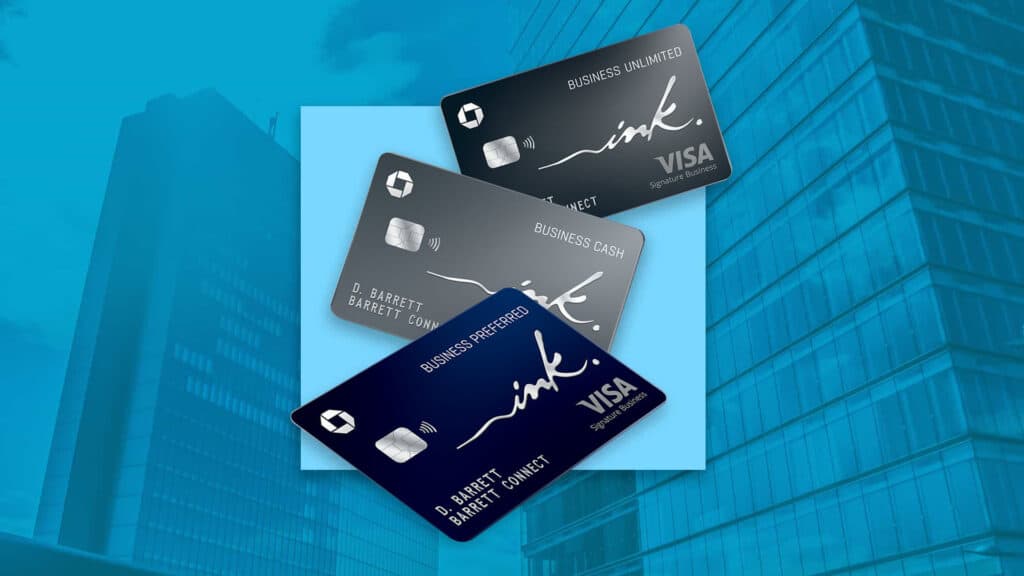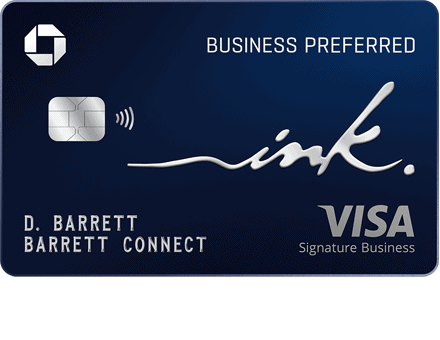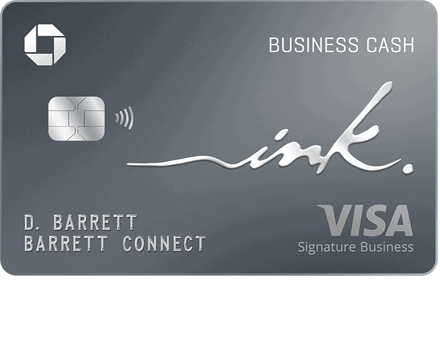MileValue is part of an affiliate sales network and receives compensation for sending traffic to partner sites, such as CreditCards.com. This compensation may impact how and where links appear on this site. This site does not include all financial companies or all available financial offers. Terms apply to American Express benefits and offers. Enrollment may be required for select American Express benefits and offers. Visit americanexpress.com to learn more.
Note: Some of the offers mentioned below may have changed or are no longer be available. You can view current offers here. All values of Membership Rewards are assigned based on the assumption, experience and opinions of the MileValue team and represent an estimate and not an actual value of points. Estimated value is not a fixed value and may not be the typical value enjoyed by card members.
If we were to start handing out awards here at MileValue, we can officially declare Chase the winner of some of the most exciting updates in the credit card marketplace for September 2020. Between updating the welcome bonus on the Chase Sapphire Preferred, and improving the Chase Freedom Unlimited® and the introduction of the Chase Freedom Flex®, Chase has been all over the news in the points and miles world as of late.
And guess what: they’re back in the news again. This time, it’s in regards to their business card products – the Ink line of products.

State of the Ink Cards
One of the first things that happened in the credit card world shortly after all of the initial impact of COVID-19 in March 2020, was the unofficial inclusion of additional requirements for getting approved for business cards from Chase.
Chase required virtually every applicant to login to an existing Chase business account as a part of the application process. Otherwise, they would instantly deny your application if you didn’t or weren’t able to login to an account.
Chase required virtually every applicant to use a business EIN, effectively outlawing sole proprietors from getting approved for new business cards when using personal Social Security Numbers, except in the rarest of cases.
If you were a sole proprietor that was able to skirt these restrictions, you were only able to do so if you had an existing business banking relationship with Chase.
However, we have hopefully good news that this is now somewhat a thing of the past. We’ve seen reports from Doctor of Credit, as well as a number of our own data points, that seem to indicate that Chase has relaxed the restrictions that were being enforcing earlier this year. We’re now seeing not only approvals by sole proprietors as well as those with EINs, but also instant approvals as well.
This is a good sign as a whole as it indicates that Chase no longer has as much of a doom and gloom outlook on the overall credit markets as they did back in March when these restrictions, amongst many other things, were put into place. Things certainly aren’t back to normal by any stretch of the imagination, but for now this is an overall healthy and positive outlook on things.
Now Is A Great Time To Consider Ink Cards
With Chase being more relaxed on new business card applicants compared to the last 6 months, now is a great time to consider adding Ink cards to your wallet.
One thing we like to stress to people in the points and miles world is to navigate into new cards at a manageable pace. Ultimately however, banks will decide that you’ve moved too quickly for their liking and might start to deny you, or at least not instantly approve you. This is all somewhat normal.
So if we look at the last 6 or so months as a “forced cool down period” on business cards for virtually all of us, primarily Chase since other banks weren’t as restrictive, a number of you might be in prime position to apply for and get approved for a Chase Business Ink card.
Remember that all of the Chase Ink Cards are restricted by Chase’s 5/24 rule. You have to be under 5/24 to be eligible for any of the Ink Cards, but opening an Ink Card doesn’t add to your 5/24 count.

Chase Ink Business Preferred® Credit Card
90,000 bonus points after you spend $8,000 spend in 3 months.
Which Ink Is Right For Me?
Chase has three Ink Business credit cards for your consideration. Here are some highlights for each:
- the Chase Ink Business Preferred® Credit Card is currently offering its highest bonus ever,
- the Chase Ink Business Cash® Credit Card continues to be a mainstay in the wallets of those with heavy office supply spend, and
- The Chase Ink Business Unlimited® Credit Card helps all cardholders maximize their non-bonus category spend.
But with some overlapping benefits, and other benefits unique to each card, how can you decide which Ink card is best for your business?
Let’s walk through the Ink cards to help you decide which will be the best fit for your small business.
Am I Eligible for Business Cards?
One important thing to discuss before getting into the Ink cards – more people are eligible for small business credit cards than realize it.
We’ve outlined a number of common myths associated with business card eligibility. If you’re on the fence about whether or not you’re eligible, be sure to give it a thorough read. And if you’re still unsure, don’t hesitate to email me with your unique situation – matt[at]milevalue.com
Chase Ink Business Unlimited® Credit Card
Earn $750 bonus cash back after you spend $7,500 on purchases in the first 3 months from account opening.
Bonus Categories
The biggest difference between the 3 Ink cards is the way they earn points through the spending made on each respectively. Each one is unique in its own way, and if over time you’re able to acquire all 3, you’ll be armed with an Ultimate Rewards earning arsenal.
Ink Preferred
- Earn 3x per $1 on the first $150,000 spent in combined purchases travel, shipping purchases, Internet, cable and phone services, and on advertising purchases made with social media sites and search engines each account anniversary year.
- Earn 1x per $1 on everything else.
Ink Unlimited
- Earn 1.5x per $1 on every transaction, regardless of category.
Ink Cash
- Earn 5x per $1 on the first $25,000 spent in combined purchases at office supply stores and on internet, cable and phone services each account anniversary year.
- Earn 2x per $1 on the first $25,000 spent in combined purchases at gas stations and restaurants each account anniversary year..
- Earn 1x per $1 on everything else.
Confused by which option to choose? Certainly understandable. Let’s try and break it down into a few scenarios to help you better analyze it.
If you have the ability to spend a lot at office supply stores such as Staples and Office Depot, look no further than the Ink Cash. You’ll earn 5x per $1 spent at these retailers on the first $25,000 you spend each anniversary year. And don’t forget – most office supply stores also sell a variety of merchant gift cards that can be used at other stores. If you have purchases to make at Lowes, Home Depot, Amazon, and more, you can use the Ink Cash to earn 5x points on these transactions by purchasing gift cards.
If you spend a lot on business travel, shipping or social media and search engines, then the Ink Preferred will be a good card for you. It earns 3x per $1 spent in these categories on the first $150,000 you spend each anniversary year. That’s a lot of points.
If you spend a lot on internet, cable and phone services – you have a decision to make since both the Ink Cash and Ink Preferred overlap in these categories. The Ink Cash earns more at 5x per $1 vs the 3x per $1 of the Ink Preferred, but the Ink Preferred has a $150,000 limit on that bonus category vs the $25,000 limit of the Ink Cash.
For everything else, the Ink Unlimited couldn’t make things simpler as it earns 1.5x per $1 spent on every transaction, everyday, no matter what the category and with no earning cap.
Chase Ink Business Cash ® Credit Card
Earn $750 bonus cash back after you spend $7,500 on purchases in the first 3 months from account opening
Consumer and Travel Benefits
The Ink Cash and Ink Unlimited are very similar not only with the sign-up bonus that they offer, but additionally with the consumer and travel protections that both cards offer. Both cards offer purchase protection and extended warranty protection on purchases, as well as primary rental collision coverage when renting for business purposes.
Both the Ink Cash and Ink Unlimited offer 0% APR on purchases and balance transfers for the first 12 months. So if you’re looking for a little bit more time to finance some purchases, especially if you’re a new business starting out, either of these cards could be a powerful player in funding your business.
A few perks unique to the Ink Preferred include:
- No foreign transaction fees
- Cell phone protection
- Access to transfer partners
- Points are worth 1.25 cents each when redeemed for travel
Annual Fees
Given the lucrative earning potential of the Ink cards via the bonus categories offered, it may surprise you that the only Ink card with an annual fee is the Ink Preferred ($95). The Ink Cash and Ink Unlimited both have no annual fee.
Final Thoughts
If you haven’t previously considered the Ink cards, there couldn’t be a better time to apply for them given that Chase has recently toned down their restrictions for approvals.
Ink cards pack a serious punch for all cardholders – both with strong initial sign-up bonuses, and long term earning potential thanks to generous bonus categories and earning structures that continuously reward big spenders.
But which one you choose can vary depending on your business and the type of spending that you do. While ultimately a number cardholders can justify having all 3 Inks for their business over time, picking which one to start with or which one to add to your wallet now can be challenging until you break down the benefits offered by each card.
Between the lucrative sign-up bonuses, very reasonable annual-fees or even no annual-fee, and an extensive list of benefits for the cardholder, you can’t go wrong with whichever Ink card you choose.




Good post and I’m an INKer for life (5 cards in 10 years). Most people don’t think long term they should be Flipping the cards now and getting ready to TRAVEL !!! I gave away 70K HAL points to my Doc with 5 kids and I’m sure they can use them ..Once we get a Vaccine the Travel Blogs will take off again like a Jet.
Thanks for the post maybe post some of ur Super Trips to keep us happy.
#stayincave